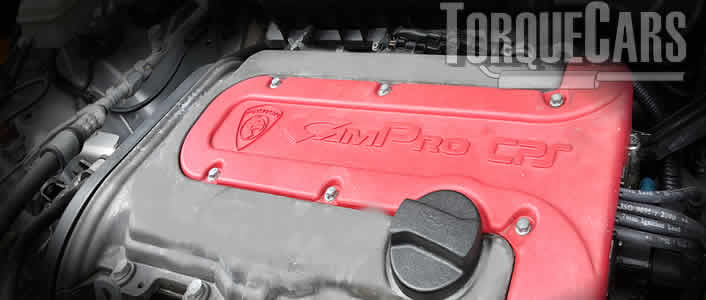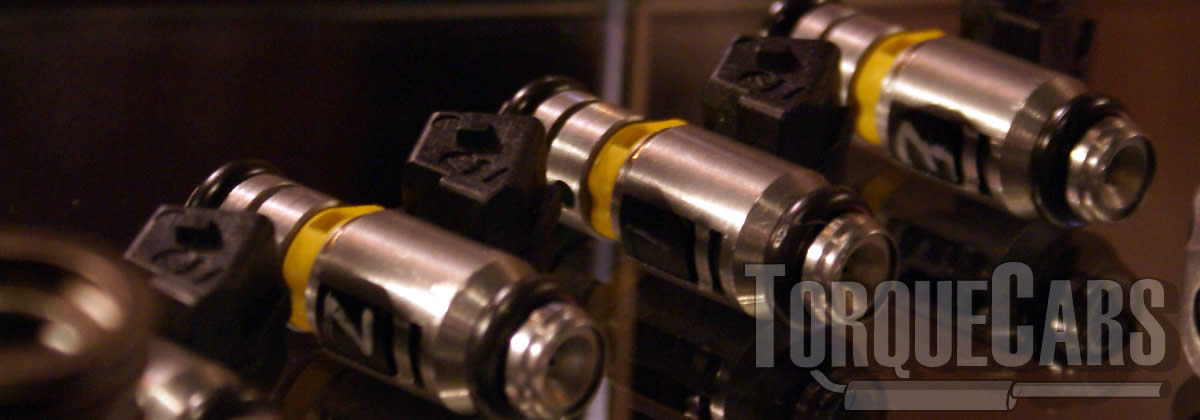Tuning the Proton Campro
"All you need to know about performance parts and tuning the Proton Campro engine!"
Carref prides itself on providing the latest tips and guides to your modification project.
TorqueCars will outline options for your Campro tuning and point out the best modifications.
Proton Campro make awesome project engines and with a few sensible modifications like a remap, turbo kits and camshafts you will positively enhance your driving pleasure.
An all new engine design for the Proton range, developed alongside Lotus.
By focusing on one block, Proton were able to develop the cam, intake and valve timing systems and have proved they are capable of making a good engine.
We rely on our visitors to pass on tips and tell us about their projects and what worked on their car, and this article is the culmination of the feedback we have received. First let us look at the history and specs of this engine and then consider which tuning modifications work best on it.
History of the Engine

- S4PH 1.6L 110hp 109lbft
- S4PE 1.3L 94 hp 89 lb⋅ft
- CamPro CPS (Triple cam lobe design) 1.6 138 hp 151 lb⋅ft
- CamPro IAFM variable-length intake manifold
1.3 98hp 83lbft
1.6 109hp 111lbft - CamPro CFE turbocharged 138 bhp 151 lb⋅ft
- Campro VVT engine Variable valve timing
1.3 94 bhp 89 lb⋅ft
1.6 107 bhp 111 lb⋅ft
What are the most effective Campro parts
Just because particular upgrades are popular with Campro owners it doesn't mean its worth having, instead we will greatest upgrades that will give your Campro the best power gain for you money.
Early campro engines have a flat spot at the low end, with a cam profile and piggy back ecu it is possible to smooth this right out and create a pretty neat engine setup.
The camshaft profile plays a big part in the engines power output so camshaft upgrades make quite a large difference. The intake and exhaust durations will alter depending on the chosen camshaft profile, so large bhp gains are on offer for camshaft upgrades.

Fast road camshafts tend to bump the power across the rpm band, you may lose a little low end bhp but high end rpm power will be better.
Motorsport camshafts, bump the high end rpm power band but as a result the car will not idle smoothly and low end power nearly always suffers.
A Motorsport cam makes it harder when in heavy traffic.
You should ideally match your engines power to your usage of the car so for a road car stick with a shorter duration Campro cam

Some Campro engines respond better to mild cam durations check your engine on a rolling road.
The ecu map and fuelling also have an effect on the power gains you'll get.
A longer valve duration can alter the power band and on most engines the exhaust and intake durations do not need to match, although most cams and tuners use matched pairs there are some advantages to extending the intake or exhaust durations.
Please watch our introduction Video tutorial to car tuning. Be sure to subscribe and support our new channel.
How to tune your car
- Improve the handling
Focus on Suspension improvements, such as coilovers and make sure the bushings are in good order and that the alignment is correct. Then focus on improving the brakes, with a big disk brake conversion kit and fast road brake pads.
- Remove restrictions
Focus on the intake and exhaust with filters being the common point of restriction in a tuned car. Intercoolers may also become restrictive on turbo engines so this may also need to be uprated.
- Burn more fuel & air
Increase the fuelling so it matches the air coming into the engine. The ratio is important so you need to improve the fuel pump and injectors, so the head mods, big valve conversions, fast road camshafts and forced induction upgrades extra supply of air is adequately met.
- Test and replace any weak parts
Weak areas are commonly the clutch, the turbocharger and pistons and crankshaft in a highly tuned engine. Makes sure these components will cope with your power aspirations.
- The Tune or Remap
A cars ECU controls the fuel, timing, spark and even the turbo in some cases, so to fully extract your gains you should remap the car last and this will fully release the power. Some cars are easy to map, and others require piggyback ECU's or aftermarket ECU's but this is the most vital step of your tuning project.
Modifying to Stage 1:
Remaps/piggy back ECU, Panel air filters, Drilled & smoothed airbox, Sports exhaust manifold, Fast road camshaft, Intake headers.
Modifying to Stage 2:
induction kit, high flow fuel injectors, Fast road cam, fuel pump upgrades, Sports catalyst & performance exhaust, Ported and polished head.
Modifying to Stage 3:
Engine balancing & blueprinting, Crank and Piston upgrades to alter compression, Adding or Upgrading forced induction (turbo/supercharger), Internal engine upgrades (head flowing porting/bigger valves), Twin charging conversions, Competition cam.
A remap will help fully realize the full potential of all the parts you've done to your Campro.
It will usually give around 30% more power on turbocharged vehicles and you can expect to see around 15% on NASP engines, but figures achieved usually vary depending on the parts you've fitted and the condition of your engine.
Pulling more air into the Campro engine is the whole point to any engine upgrade task.
The intake plenum carry the air from the filter and allow it to be pulled into the engine cylinders.
Shape and flow rate of the Intake headers can make a substantial improvement to fuel delivery on the Campro.
Most intake manifold are in desperate need of aftermarket parts, although some manufacturers provide reasonably good intake manifold.
Fitting big valve kits, doing a bit of Campro port enlargement and head flowing will also lift power, and importantly will afford you a better power increase on other parts.
Which turbo upgrades are best?

NASP engines need quite a lot of work when you add a turbo, so we have a separate guide to help you take into account the pros and cons of going this route on your Campro
The more air you can get into an engine, the more fuel it can burn and uprating the induction with a turbocharger upgrade makes significant power gains.
When the engine is fitted with a turbocharger tuning mods are giving better power gains and you'll see that turbo engines are made using harder and stronger components.
However you'll find engines have weakspots
See where you'll find these limits and fit stronger pistons, crank and engine components to utilize the power.
We've seen drivers spending a a stack of money on turbo charger upgrades on the Campro only to see the engine go up in smoke on it's first outing after it's been finished.
Larger turbos commonly suffer a bottom end lag, and small turbos spool up quickly but don't have the peak end bhp gains.
Over the last 20 years the selection of turbo units is always increasing and we commonly find variable vane turbo units, permitting the vane angle is altered according to speed to lower lag and increase top end power.
Twin scroll turbo units divert the exhaust gases into a couple of channels and direct these at differently angled vanes in the turbocharger. They also improve the scavenging effect of the engine.
You'll commonly see there's a limitation in the air flow sensor AFM/MAF on these engines when a lot more air is being sucked into the engine.
We note 4 bar air sensors coping with quite large power gains, whereas the OEM air sensor sapped bhp at a much lower level.
Adding a supercharger or additional turbo will make large bhp gains, although more challenging to install. We have a twincharger bhp adding guide if you want to read more.
Fuelling
Don't miss you'll need to ramp up the fuelling when you are increasing the bhp and torque - it makes the car more thirsty.  We strongly recommend you to be generous with your flow rate on the injectors.
We strongly recommend you to be generous with your flow rate on the injectors.
As a rule of thumb add another 20% when specifying an injector, this allows for injector deterioration and allows you some spare capacity should the engine require more fuel.
We think this one is common sense, but you'll need to match your fuel injector to the type of fuel your car uses as well.
All the following flywheel power targets will assume an injector duty cycle of 80% and a base of 58psi of fuel pressure at idle.
- 4 Cylinder turbocharged engines
- 58 PSI 340cc/min 200hp
- 4 Cylinder NASP engines
- 58 PSI 285cc/min 200hp
- 4 Cylinder supercharged engines
- 58 PSI 312cc/min 200hp
Choosing the right performance exhaust
One of the most common mistakes and problems we see in tuning projects is usually down to the exhaust, or rather a poorly chosen exhaust for your engine.
You only need to to uprate your exhaust if your exhaust is actually causing a flow problem.
On most factory exhausts you'll find your flow rate is fine even on modest power gains, but when you start pushing up the power levels you will need to get a better flowing exhaust.
Sports exhausts can help balance the flow of gases through the engine.
But if your exhaust pipe is too big, ie: it's over 2.5 inches bore, you will lose much of the flow rate and end up lacking power and torque.
Typically exhaust restrictions are traced to the catalyst and filters installed, so adding a freer flowing sports alternative will help avoid this restriction.
Weak spots Issues & problem areas on the
The engines are generally reliable and solid as long as they are regularly serviced and maintained.
Regular oil changes are vital on the , especially when tuned and will help extend the life and reliability of the engine.
For more information on Tuning your engine please join us in our friendly forum where you can discuss tuning options in more detail with our owners. It would also be worth reading our unbiased tuning articles to get a full grasp of the benefits and drawbacks of each modification.
Please help us improve these tips by sending us your feedback in the comments box below.
We love to hear what our visitors have got up to and which upgrades work best for them on each model of car. Comments are used to improve the accuracy of these articles which are continually updated.
If you liked this page please share it with your friends, drop a link to it in your favourite forum or use the bookmarking options to save it to your social media profile.
Check out TorqueCars new YouTube channel, and see their awesome new content...
Feedback
Please use our forums if you wish to ask a tuning question, and please note we do not sell parts or services, we are just an online magazine.
Help us improve, leave a suggestion or tip
